A week in the shop
11 Feb 2018
Tags: amp, blues deluxe, red rocker, videos
Although a chunk of this week was taken up doing contract work (which has been fun, but less interesting to this audience) I did managed to spend some time in the shop and move things forward on the amp, publish some videos, and announce the first Electric Flapjack prototype series.
Back in the shop, I moved the amp forward. First up, I got messy and did the painting of the cabinate and the speaker baffle.
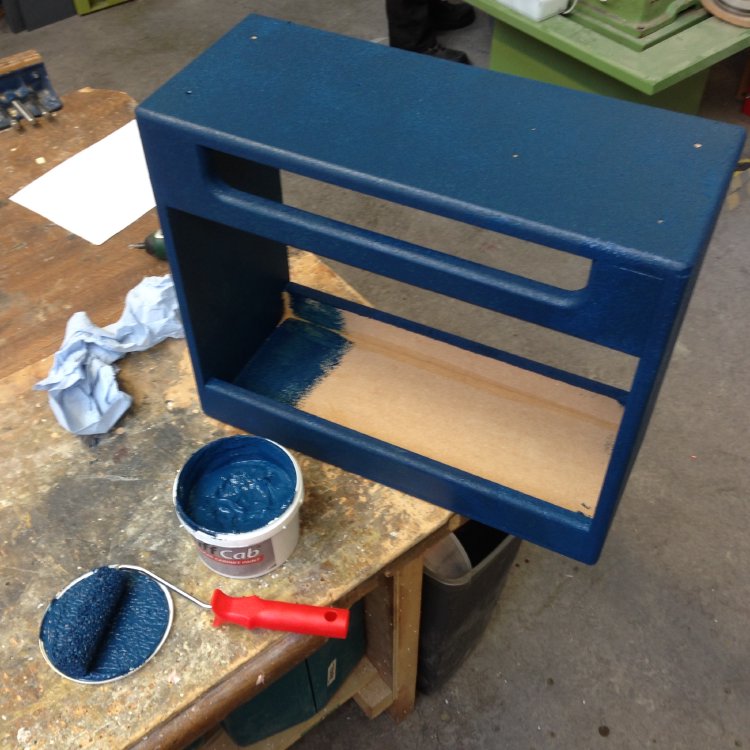
Most amps tend to be covered in tolex, which is a textured vinyl coating. But I wasn’t keen to try that on my first amp as I knew that it’d be a pain to get on just right (nice seams, no bubbles, etc.), and the amp project has enough new-to-me parts without me adding more on the first build. Thankfully I spotted someone else in Makespace building some PA speakers, and they were using a special paint called Tuff Cab designed for just this application, and when applied with their special roller comes up with a nice textured finish. So I ordered some of that and used that to paint the cabinate.
The speaker baffle is painted black, and then I wrapped it in silver grill cloth similar to that you’d find on a Fender amp. Overall I have this vision of a blue cabinate with silver/white parts, and at this early stage it feels like it’s coming together well.
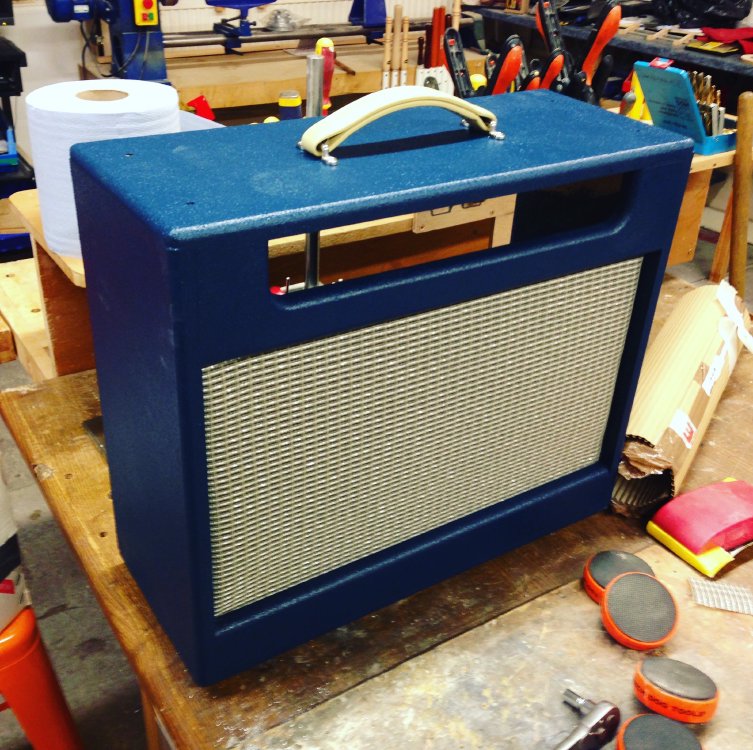
The other progress on the amp was modifying the chassis to take the transformers I have. The chassis I have was not designed for a through mount power transformer, rather one that just mounts on the surface and wires run through a hole. This meant I needed to drill new mount holes for a Fender Champ style power transformer and cut a rectangle for the through mount. Whilst I’ve spent the last almost two years slowly building up my skills at wood work, I was back to square zero with metalwork, not having done any of that since high school! I’m also limited in what tooling we have at Makespace, which is more biased for woodwork than metalwork currently. There is a metal mill, which would have been ideal, but I’m not trained to use it yet, so I had to get creative. In the end I discovered you can get scroll saw blades that cut metal (the scroll saw being a fine bladed machine that normally I’d use for cutting curved headstock outlines), so I ordered some of those. By drilling a few holes along the edge of where I needed the rectangular cut out, I could thread the scroll saw blade through and then run around the outline of my rectangle easily.
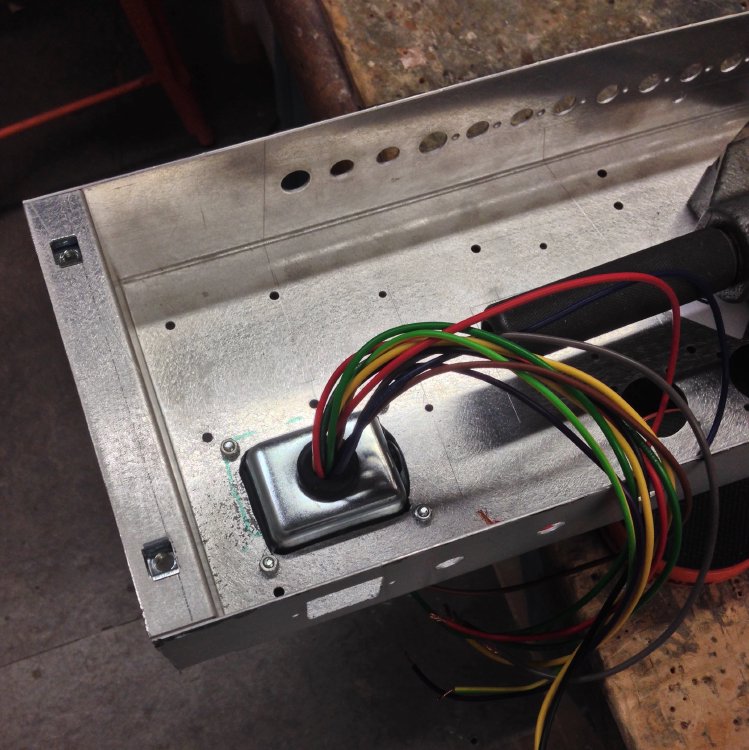
Now I can mount my transformers to the chassis, so mounting is all good; so next week it’s on to the turret board and soldering the electronics.
The other major achievement of the week: I edited and publish the demo videos for guitars #3 and #4. You can see them here:
Truth be told, the videos were very frustrating to produce, but I’m fairly happy with how they turned out. I had three hours booked at a local practice studio to shoot all the footage, and it was just me with two guitars, an amp I wasn’t familiar with, and a small camera and a room microphone I got a while ago for recording meetings. All of which meant the session was rushed and the footage is way lower quality than I’d expected; this was mostly because I didn’t have time to shoot and review on computer, I just checked the thumbnails on the camera looked okay, but the camera wasn’t set up properly for video, so in the end the quality of video was quite poor. However, this forced me to include the stills to show the guitar in detail, and that worked really well, and I then further inserted more pictures of the production too which feedback tells me was a good move. So in the end the videos ended up better than I had planned to overcome the shortcoming of my footage quality.
I also have to thank my brother Tristan, who shoots video for a living when he’s not recording albums with his band IKARI, for all the advice and encouragement he gave me. Ideally I’d have had Tristan come down and shoot the whole thing, but he’s booked out at the moment, but he did give me some sage advice, such as shooting the playing and speaking in different styles, to make cuts a feature rather than something you try to smooth over. That also helped, as my playing isn’t nearly polished enough for me to things in a single take.
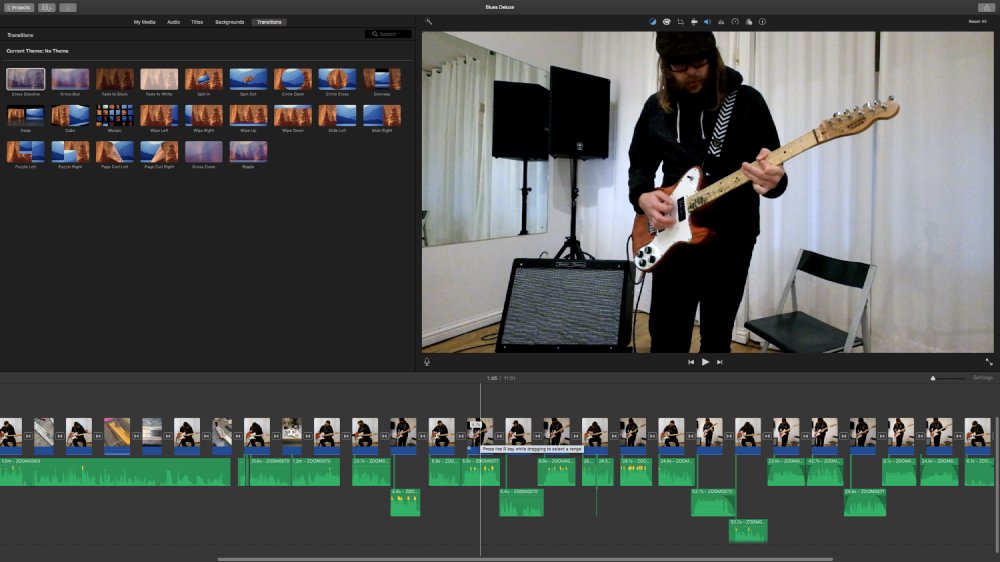
I edited it all in iMovie, and I’m pushing it close to it’s limits here in terms of cuts, titles and mixing different audio, but I didn’t have time to learn yet another fancy package like Final Cut Pro, so it also meant I kept things manageable even if the results are restricted.
I also set up an Electric Flapjack YouTube account, which had the benefit of allowing me to do proper thumbnails for the videos. It was a bit of a faff to set up, but worth it to have the nice presentation when embedding the videos.
The main purpose of getting through these videos was so I could point people at examples of guitars I’ve built when trying to encourage people they want an Electric Flapjack guitar. Thus I wanted them done before I did the next section…
Finally, but possibly most excitingly, I announced my first Prototype Series of guitars!
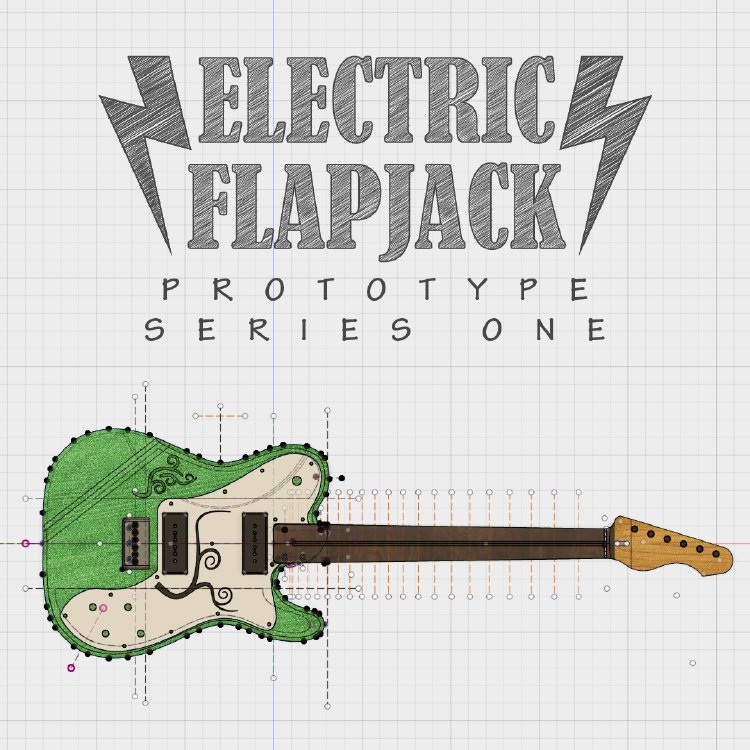
The idea is that I’m about to build a couple of prototype guitars based on the new CAD/CAM workflow I’ve been building to help me rough out things before then hand building the rest, but rather than build these prototypes as generic guitars, I’d like to build them for actual people, and I’ll do so at close to cost. So you get a hand made custom t-style guitar to your specification, and I get to not just refine my workflow, but know that these guitars will go on to be used by people who will appreciate them.
More details can be found here, and if you want one then do get in touch soon. I only plan to make two or three, and the first one has been spoken for. Once my workflow is out of prototype phase I’ll be charging more regular prices for the builds, so you’re looking at paying a third of what you’d normally pay with this offer.